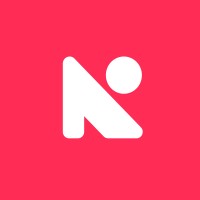Our mission is to help HR and TA professionals find and buy the right software. This means sifting through the expanding universe of 30,000 HR tools (yes, that is about how many exist!), and featuring the right ones. Of course, that means we reject a lot of vendors who want to be on the site.
This post is to clarify the main reasons we reject vendors (even those who offer to pay us…everything is up to our editorial team at SSR!).
We come across dozens of HR Tech tools in a given month. We happen upon some as we're exploring the depths of a particular software category. Others are recommended to us by our community of HR experts.
Additionally, many vendors reach out to us directly. We get hundreds of requests each year, and only add about 9% of these companies to the site.
While we feel quite fortunate to be considered by many companies as a site they’d like to be mentioned in, it’s more of a nod to our readers— HR and TA professionals.
If an HR software company cares about being featured in SSR, we know that it’s because they find value in our readers’ attention and want them to be aware of their tool.
Buyer Guides: The SSR Shortlist
This brings us back to how we choose vendors for a shortlist. Bearing all this in mind, we can’t just take money from vendors and make a list of the “10 best HRMS”, for instance, based on who’s willing to pay the most.
If we did that, our readers would be misguided into pulling the trigger on a shiny new app fast as opposed to finding the right solution. In the long run, this wouldn’t be good for their team, who probably wouldn’t adopt the tool. In turn, this would mean dropping it within a couple of months or a year at most, which would be bad news for the vendor as well (and for us as it’d hurt our reputation).
So we need to vet, test, evaluate, and select. Unfortunately, this means rejecting many companies. Many of these are good companies with good products, but just not quite at the top 10-15 of their category, yet.
To better illustrate what this continuous shortlisting process is like, let’s take a look at some of the companies that reach out to us on a given Tuesday:
Case 1: Very nice tool, but still early in a competitive category
Here’s a real example. Company “A” reaches out to us to be featured on the site. At first glance, they’ve got an interesting product, their client list is growing, and the UI is amazing. However, they are within a very competitive category. In this case, Applicant Tracking Systems.
Here’s what they told us about themselves via the form to request being listed:

Our read here is that this product is a bit too niche. It’s hard to make the case that they deserve a spot among the top ten ATS’s.
But hey, if the company keeps growing, they’ve gotten some funding, and their clients seem to like their product, it’s one to keep an eye out for in the future. And, we are always iterating on our buyer guides.
Case 2: :Sorry, no pay to play
Let’s look at another one. Company “B” reached out previously. We sent the form to submit more information and had to hold off on doing a demo with them because of time constraints. We then get an email like this:

We highly appreciate this kind of engagement, where someone at the company goes to the lengths of sharing their recent accomplishments and product updates with us. It’s extremely helpful, as it gives us an idea of how the company is evolving, and that can weigh in our final decision to feature them, even if it’s months or sometimes years from when they initially reached out.
In this case, while we’re still unsure about scale and product capabilities, it’s great to keep in touch with this company and understand how they’re playing their hand in their category. For now, we had to say no, even though they reached out to our founder and offered to pay for the listing, which is not something we do.

Case 3: The company wants to be in non-relevant categories
Here’s another type of interaction with a software vendor. Sometimes we’ll have them already listed in a category on the site, and they notice that getting traffic from SSR is good for them. So, they want to increase that traffic. The best way to do that is to get added to more categories (for example an HRIS vendor wants to be added to employee onboarding, payroll, etc).
Of course, this doesn’t always make sense. A tool that is one of the top 5 in a category such as “HR Software for Small Businesses” might not make sense within the top 10 of something more specific as “performance management”. In this example, even if they do have a performance management module, it can be too basic to consider it one of the best tools in that given niche.
Companies will sometimes try to argue their way into as many categories as they can, as in the following email.

In this case, we had to say no to adding them to Org Charts and Business Intelligence, since they don’t offer that part of their product as stand-alone tools. For the benefits part, we had to wait until they released it along with a webinar and then take a look to more fully vet it.
Shortlists change!
The symbiotic relationship between a software tool and its users is like a language; it’s always evolving as long as it’s exercised. So, as long as the developers keep tinkering with the product based on what the users are doing or would like to do with it, and the changes they perceive in the industry, software is rarely 100% stable.
For this reason, we like to stay in touch with as many companies as possible, hear about what they’re doing, and keep tinkering with our own product; a shortlist of software tools that we try to keep evergreen. Hence, even if we might reject many companies on a daily basis, this is never a definite answer.


























